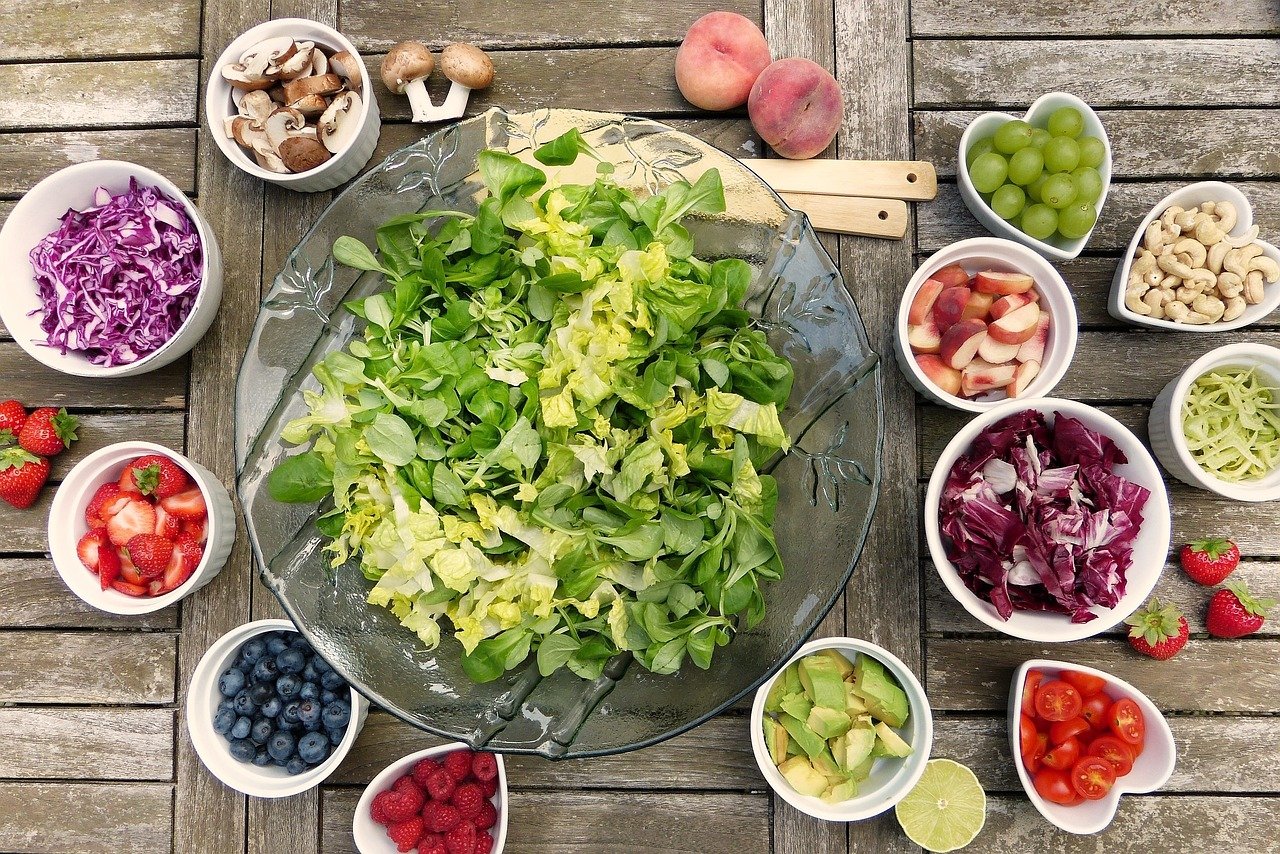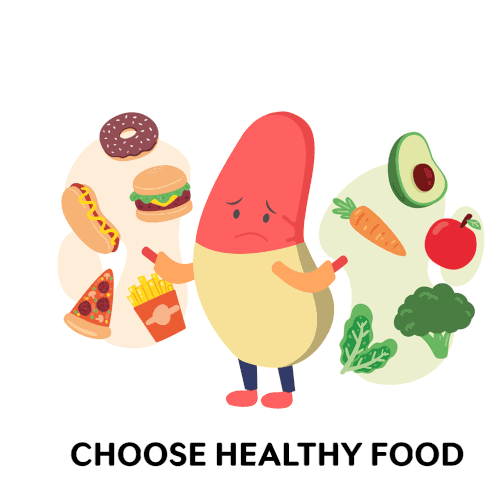Healthy Balanced Diet Plan
Published On : 18th Oct 2024

Consuming a Healthy Balanced Diet supplies your body with the necessary nutrients for good health and overall wellness. It is crucial to sustain energy levels, aid in bodily processes, and ward off long-term illnesses. Eating a well-balanced diet can also aid in Weight Loss by emphasizing the importance of eating nutrient-rich foods, monitoring portion sizes, and making long-term healthy choices.
What we are covering here:
Include a Variety of Food Groups
It is crucial to include a variety of food groups in your diet to ensure your body receives necessary nutrients for both good health and long-term weight management. Every food category provides different advantages, therefore having a variety of choices is important for ensuring all needs are met. Here are ways to include different food groups.

- Fruits and Vegetables: Aim for a range of colors and varieties. Try to occupy half of your plate with fruits and vegetables. They offer necessary vitamins, minerals, and fiber.
- Whole Grains: Choose whole grains such as brown rice, whole wheat, quinoa, and oats. They contain a high amount of fiber and aid in controlling digestion and blood sugar levels.
- Proteins: Include low-fat proteins like fish, chicken, beans, lentils, tofu, eggs, and nuts. These give necessary amino acids for repairing muscles and promoting overall development.
- Dairy Products: Include low-fat or fat-free dairy items, as well as fortified plant-based options, for essential nutrients like calcium, vitamin D, and others.
- Healthy Fats: Choose sources of unsaturated fats such as olive oil, avocados, nuts, and seeds. These support heart health and brain function.

By including variety of food groups, you can have a balanced diet that promotes overall health and helps with weight loss. Having a variety of foods in your diet helps you obtain the necessary nutrients and makes meals more enjoyable and fulfilling.
How To Do Portion Control
Portion control is key to managing your calorie intake, especially when aiming for weight loss or maintaining a healthy weight. It helps you avoid overeating while still enjoying a balanced diet.

- Be mindful of portion sizes: Eating too much, even of healthy foods, can lead to weight gain. Use smaller plates, and check food labels for portion guidelines.
-
Portion Protein and Carbs Appropriately: Keeping portions of protein and carbohydrates in check is important to avoid overeating, as they can be high in calories.
-
Fill Up on Low-Calorie, High-Fiber Foods: Foods high in fiber, like fruits, vegetables, and whole grains, help you feel full longer with fewer calories. Start meals with a salad or a broth-based soup to help fill you up before the main course. Fill half your plate with non-starchy vegetables to keep portions of higher-calorie foods in check.
-
Use Hand Portions as a Guide: The size of your hands in proportion to your body allows for personalized portion control.
- Protein- Your palm = 1 serving (3–4 oz).
- Carbs- Your fist = 1 serving (about 1 cup).
- Fats- Your thumb = 1 serving (about 1 tablespoon).
- Vegetables- Two open handfuls = 1 serving.
-
Eat Protein and Fiber at Every Meal: Protein and fiber both promote fullness and reduce the likelihood of overeating. Every meal should include a protein source like chicken or beans and fiber-rich foods like vegetables and whole grains to improve appetite regulation.
Portion control is about eating the right amount of food for your body's needs without overeating. By making small changes like using smaller plates, pre-portioning snacks, and being mindful of your food intake, you can manage your portions and achieve your weight goals while enjoying a balanced diet.
Limitation On Processed and Sugary Foods
Limiting processed and sugary foods is essential for maintaining a healthy diet, promoting weight loss, and reducing the risk of chronic diseases such as obesity, diabetes, and heart disease.

Avoid highly processed foods and sugary snacks, which are high in empty calories and low in nutrients. Limit consumption of fast food, sugary drinks, and packaged snacks.
-
Understand Processed Foods: Processed foods are those that have been altered from their natural state through cooking, preserving, or adding ingredients like salt, sugar, or fats. This includes anything from minimally processed foods like pre-cut vegetables to highly processed items like chips, cookies, and ready-to-eat meals.
-
Choose Whole, Unprocessed Foods: Whole foods are nutrient-dense and contain fewer additives than processed foods. They are also higher in vitamins, minerals, and fiber, which help you stay full longer.
-
Reduce Sugary Snacks and Desserts: Sugary snacks and desserts (cookies, cakes, candy, pastries) contribute empty calories with little to no nutritional benefit, leading to spikes and crashes in energy levels.

SAY NO TO SUGAR ! ! !
-
Limit Refined Carbs: Refined carbohydrates (white bread, pastries, white pasta, and sugary cereals) are quickly broken down into sugar, causing blood sugar spikes followed by crashes, leading to hunger and overeating. "Replace refined carbs with whole grains like Whole wheat bread, brown rice, quinoa, oats, whole wheat pasta."
Reducing consumption of processed and sugary foods is essential for a healthy diet and long-term wellness. You can improve your diet and achieve weight loss or health goals by consuming whole, nutrient-dense foods, cutting back on processed snacks and sugary drinks, and preparing more meals at home.
Body Hydration
Staying hydrated is essential for overall health, as water plays a vital role in many bodily functions, including temperature regulation, digestion, nutrient transport, and detoxification. Proper hydration can also support weight loss, enhance physical performance, and improve skin health.

-
Drink plenty of water throughout the day: Water supports digestion, circulation, and regulates body temperature. Aim for at least 8 glasses (about 2 liters) a day, and more if you're active.
-
Eat Water-Rich Foods: Foods with high water content can contribute to your daily hydration needs and provide additional nutrients. Include water-rich fruits and vegetables into your diet, such as Watermelon, oranges, strawberries in Fruits and Cucumbers, lettuce, celery, tomatoes, zucchini in Vegetables.
-
Hydrate Before, During, and After Exercise: While exercising, your body sweats and loses water, so it is important to stay hydrated to maintain energy and avoid dehydration.
- Drink 16–20 oz of water 2 hours before exercise.
- Sip water every 15–20 minutes during exercise (especially if it's intense or prolonged).
- After exercising, make sure to hydrate with water or a drink containing electrolytes.
-
Limit Dehydrating Beverages: Drinks such as coffee, alcohol, and sugary beverages can lead to dehydration by acting as diuretics, causing increased fluid excretion in urine. If you drink beverages containing caffeine or alcohol, make sure to drink an equal or larger amount of water to balance it out. Cut back on consuming sugary sodas and energy drinks as they can also cause dehydration.
-
Start and End Your Day with Water: Drinking water first thing in the morning rehydrates your body after a night of sleep, and having a glass before bed ensures you stay hydrated through the night.
It is essential to stay properly hydrated for good health, and it is simple to do so by following a few easy routines. Consume water frequently during the day, choose foods that keep you hydrated, avoid beverages that dehydrate you, and pay attention to your body's hydration requirements. Maintaining proper hydration not just helps with physical health but also enhances energy, mental focus, and overall quality of life.
Eat More Fiber
Eating more fiber is essential for maintaining good health, aiding in weight loss, improving digestion, and reducing the risk of chronic diseases like heart disease, diabetes, and certain types of cancer. Fiber-rich foods are generally low in calories, but they help keep you feeling full, support healthy gut bacteria, and promote regular bowel movements.

Fiber-rich foods like fruits, vegetables, whole grains, and legumes help with digestion, lower cholesterol, and keep you full longer, reducing the risk of overeating.
-
Start Your Day with a Fiber-Rich Breakfast: Eating a high-fiber breakfast helps you stay full longer and provides a steady release of energy throughout the morning. Opt for fiber-rich breakfast options such as:
-
Oats- Have a bowl of oatmeal topped with fruits, nuts, or seeds.
-
Whole grain cereals- Choose cereals with at least 5 grams of fiber per serving.
-
Smoothies- Blend in fruits, vegetables, and a tablespoon of flaxseeds or chia seeds.
-
Snack on Nuts and Seeds: Nuts and seeds provide both fiber and healthy fats, which help you stay full between meals.
-
Snack on a handful of almonds, walnuts, or pistachios.
-
Add chia seeds, flaxseeds, or sunflower seeds to yogurt, smoothies, or salads.
-
Choose nut butters (like almond butter or peanut butter) as a topping for whole grain bread or fruit.
-
Prepare Fiber-Rich Soups and Salads: Soups and salads are a great way to combine multiple fiber-rich ingredients into one meal, making it easy to meet your daily fiber goals.
- Make soups with beans, lentils, and vegetables like carrots, onions, and tomatoes.
- Prepare salads with leafy greens, avocado, nuts, and seeds for a fiber-packed meal.
Include Omega-3 Fatty Acids
Including omega-3 fatty acids in your diet is crucial for heart health, brain function, and overall well-being. These essential fats have anti-inflammatory properties, support healthy brain development, and help reduce the risk of chronic diseases like heart disease, arthritis, and even depression. Omega-3s are considered essential because your body cannot produce them on its own, so you must obtain them through food.

Omega-3 fatty acids, present in oily fish like salmon and mackerel, flaxseeds, and walnuts, are crucial for the health of the heart and brain. Make sure to incorporate these sources into your routine at least two times per week.
-
Add Flaxseeds and Chia Seeds: These seeds are excellent plant-based sources of ALA omega-3 fatty acids and are versatile enough to add to many dishes.
-
Flaxseeds- Grind flaxseeds to increase bioavailability, and sprinkle them on oatmeal, smoothies, salads, or yogurt.
-
Chia seeds- Add chia seeds to smoothies, yogurt, or make chia seed pudding by soaking them in liquid for a healthy, omega-3-rich treat.
-
Include Walnuts in Your Diet: Walnuts are another plant-based source of ALA omega-3s, and they also contain healthy fats, fiber, and protein. Eat a handful of walnuts as a snack or add them to salads, oatmeal, or trail mixes for a crunchy, nutrient-dense boost.
-
Use Omega-3 Fortified Foods: Some foods, such as eggs, dairy products, and certain cereals, are fortified with omega-3s, making it easier to get more of these healthy fats. Look for omega-3-enriched eggs and fortified milk or yogurt when shopping. These products often contain EPA and DHA, helping you boost your intake without significant dietary changes.
-
Eat Fatty Fish: Fatty fish are the best natural source of EPA and DHA, which are the most bioavailable forms of omega-3s. Tip: Incorporate fatty fish into your diet at least two times per week. Great sources include Salmon, Mackerel, Sardines, Tuna.
Plan Your Meals
Planning your meals is an essential part of maintaining a balanced diet, especially for improving overall health. Meal planning helps you control portions, reduce impulsive eating, and ensure you’re getting the right nutrients. It also saves time and reduces stress during the week by having a clear plan of what to eat.

Planning can prevent making unhealthy impulsive decisions at the last moment. Plan nutritious meals and snacks ahead of time to help you stay focused.
Healthy Supplements (If Needed)
While a diet that is balanced should ideally give you all the necessary nutrients, certain people may benefit from taking supplements to boost their health, particularly if they follow certain dietary restrictions or have specific health objectives.

While a balanced diet should provide all necessary nutrients, supplements may be necessary in some cases (e.g., vitamin D, B12 for vegans). Consult a healthcare provider before taking supplements.
-
Plant-Based Protein Powder: A protein supplement made from plant sources such as peas, rice, hemp, or soy. It is helpful for individuals who need to increase their protein intake, such as vegetarians, vegans, or those engaged in strength training. Look for high-quality protein powders without added sugars or artificial ingredients. Aim for 15-30 grams of protein per serving.
-
Multivitamins: A supplement that contains a combination of vitamins and minerals. It can help fill nutrient gaps in your diet, especially for those with dietary restrictions, busy lifestyles, or specific health conditions. Choose a high-quality multivitamin that matches your age, gender, and health needs. Avoid megadoses of vitamins, as more isn’t always better.


Before adding any supplements to your routine, it’s essential to consult with a healthcare provider or a registered dietitian. They can help assess your individual dietary needs, potential deficiencies, and recommend appropriate supplements based on your health goals. Supplements should complement a healthy, balanced diet, not replace it.












